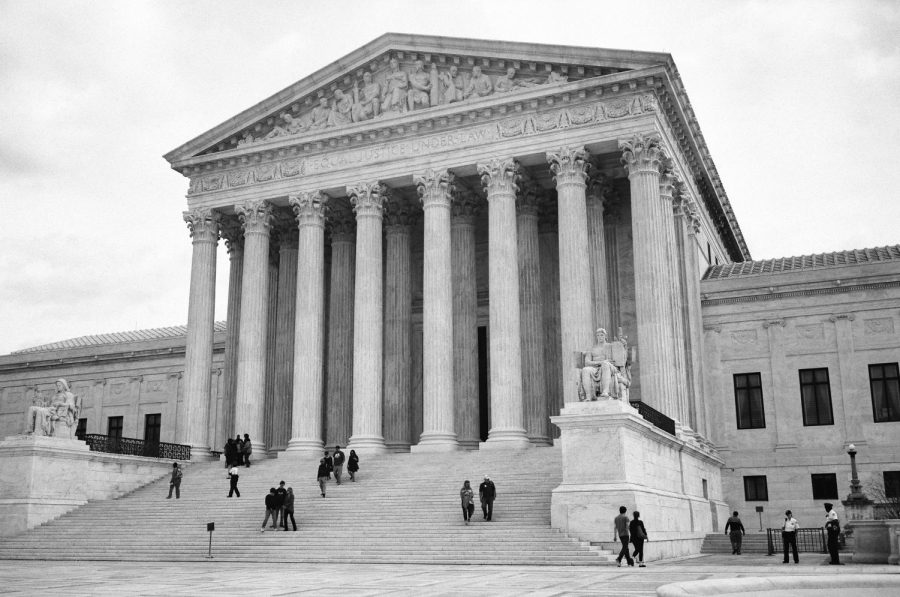Biden promises rightful representation in the Supreme Court
February 18, 2022
The Supreme Court is regarded as not only the final place of judicial review on constitutional matters, but as the place where election results, LGBTQ+ rights, women’s rights and other crucial matters have been decided. The court’s decisions have been met with criticism but have been respected across party lines.
Sometimes the history of the Supreme Court, its appointees and what they have represented in terms of gender, race, religion and ethnicity is overlooked. The court has had 115 justices, of which only five have been women and of the 100 male justices, only two have been Black.
This categorization must not come as a surprise to the public at large, because for a long time America functioned under a repressive system that excluded minorities, especially Black Americans.
The Supreme Court has also been regularly criticized for not having gender equality or at least working toward it.
The first female justice was Sandra Day O’ Connor, who was appointed by President Ronald Reagan. He had promised as part of his campaign to nominate a woman and fulfilled it without much opposition.
In 2022 President Joe Biden made a similar promise to nominate a Black woman to the Supreme Court if he had the opportunity. With Justice Stephen Breyer’s retirement announcement the Biden Administration has an opportunity to deliver on its promise.
The decision to choose appointees based on race and gender has led to severe criticism that the administration is overlooking merit. These charges have been led by the republican and conservative ideology that choosing people based on race is wrong.
People aligned with right-wing politics fervently disagree with Democrats on this issue and want to invalidate the Biden administration’s choice by saying the prospective candidate would lack merit.
What is truly ironic about their outcry is its hypocrisy; the most recent conservative appointee, Justice Amy Coney Barrett, was the nominee appointed in the shortest period of time.
Not only was she a forced appointee, she was highly inexperienced. She never argued before the federal bench, never prosecuted any big-ticket cases and never even had a long practical legal experience as a judge or lawyer.
Barrett was always part of academia and was pushed by the federalist society wish list on former President Donald Trump’s administration. Thus, merit is an argument that should not and cannot be considered as a serious allegation against the Biden administration.
The issue of choosing the appointee based on race would have been a valid question had there not been such deficiency in the intent of the previous administrations. It is not that well-qualified Black women weren’t there before, it’s that no administration had the instinct and intent to choose one.
In arguing the decision to use race and gender as qualifications it is essential to examine statistics, which demands that the political leaderships of both parties address the issue of representation.
To explain further, just look at the number of Supreme Court appointees post the Civil Rights Act, because at that point America became a full multi-racial democracy. Only post this period can be considered as the legitimate democratic process being followed, because of a common rule of law established for all its citizens.
There have been 20 appointees after 1964, the passage of Civil Rights Act and America became a full multi-racial democracy. Out of the appointees only five were women. Only two have been non-white. To put this in the context in present terms, if one black woman will be appointed, that equates to 4.7% out of all of all appointees post-1964.
This quantification is not so complicated. This only means that a Black woman getting a chance to be nominated on the Supreme Court is less than 5%, that too in 60 years. To further open it up, means that even in 60 years, there has only been a 5% chance that a Black woman will be appointed.
The political leadership of the Republican Party must not spread inexactitude until the public knows who the nominee is and the public must not be taken in by social media distortions.
There must be a consensus built around the political establishment of both parties wherein they agree to reflect America in the democratic institutions and general polity.
The implication that enabling representation of underrepresented groups is race-baiting, is highly disingenuous and wrong. People can turn around and say that the previous appointees were also race-baiting and gender-baiting because only white men were only selected.
This will only lead to severe whataboutery. People can turn around and call Reagan and Trump gender baiters because they promised a woman would be nominated. Biden is being called a race and gender baiter, because he promised a Black woman, so all of this just lowers the political discourse even more.
The only criteria for shooting down an appointee must be their credentials and issues in their background history. But, sadly sometimes that also doesn’t matter as these appointments have become highly partisan.
The Supreme Court must be given the respect that it truly deserves. It is the only institution that is a major deciding factor in America’s ongoing experiment with liberal democracy.
The sanctity of this court must not be reduced to petty politics and cheap gimmicks deployed by politicians to sway voters. The public must also understand that the Supreme Court is not a vehicle to advance political agendas, but an instrument to establish and enforce rule of law for all Americans.







